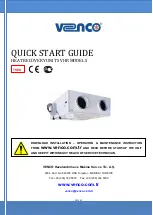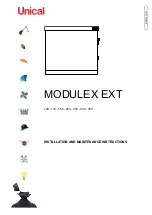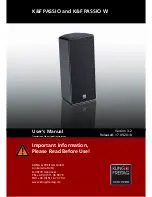
TL880D Very-Low-Frequency Speaker System
TL880D Very-Low-Frequency Speaker System
SPEAKERS—Low-Frequency Systems
Part Number 534147—9703
600 Cecil Street, Buchanan, MI 49107
616/695-6831, 616/695-1304 Fax
Specification
Frequency Response, 1 Watt at 1 Meter
on Axis, Swept One-Third-Octave
Pink Noise, Anechoic Environment
(see Figure 1):
23-1,800 Hz
Low-Frequency 3-dB-Down Point:
23 Hz
Usable Low-Frequency Limit (10-dB-
down point),
Normal Tuning:
20 Hz
Half-Space Reference Efficiency:
6.0%
Power-Handling Capacity (see Power
Handling section),
Long-Term Average per ANSI/EIA
RS-426-A 1980:
1,200 watts
Continuous Program:
2,000 watts
Maximum Long-Term Average Mid-
Band Acoustic Output:
72 watts
Sound Pressure Level at 1 Meter, 1 Watt
(2.0 volts) Input, Anechoic Environ-
ment, Band-Limited Pink-Noise
Signal,
100-800 Hz:
98 dB
50-125 Hz:
96 dB
Dispersion Angle Included by 6-dB-
Down Points on Polar Responses,
Indicated One-Third-Octave Bands of
Pink Noise (see Figure 3),
90-125 Hz, Horizontal and Vertical:
360°
125-500 Hz, Horizontal:
200° ± 80°
125-500 Hz, Vertical:
160° ± 80°
Directivity Factor R
θθθθθ
(Q), Median
over Indicated Range (see Figure 4),
50-125 Hz:
1.0
125-500 Hz:
5.2
Directivity Index D
i
(10 log R
θθθθθ
),
50-125 Hz:
0.0 dB
125-500 Hz:
7.2 dB
Distortion, 0.1 Full Power Input (see
Figure 5),
Second Harmonic,
100 Hz:
0.9%
1,000 Hz:
0.9%
Third Harmonic,
100 Hz:
0.4%
1,000 Hz:
0.3%
Transducer Complement:
Two EVX-180A
Net Box Volume:
439 liters (15.5 ft
3
)
Box Tuning Frequency:
25 Hz
Step-Down Peak-Boost Frequency:
25 Hz
Impedance, Nominal/Minimum:
4.0/4.2 ohms
Input Connectors:
Side-mounted screw terminals (#10)
on barrier strip
Enclosure Materials and Finish:
Black texture-painted poplar plywood
Dimensions,
Height:
1210 mm (47.5 in.)
Width:
762 mm (30.0 in.)
Depth:
605 mm (23.8 in.)
Net Weight:
72.6 kg (160 lb)
Shipping Weight:
80.0 kg (176 lb)
























